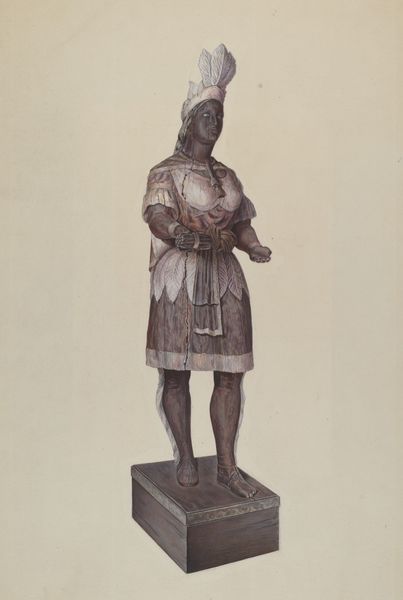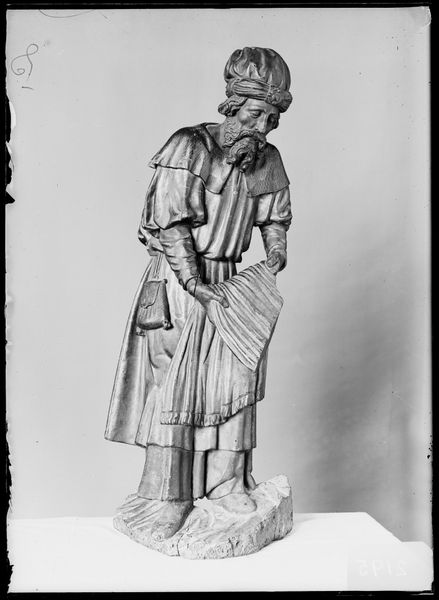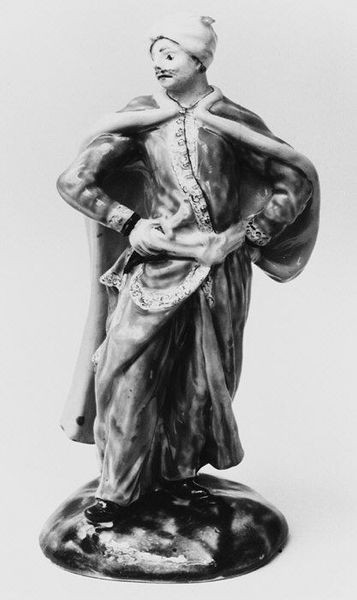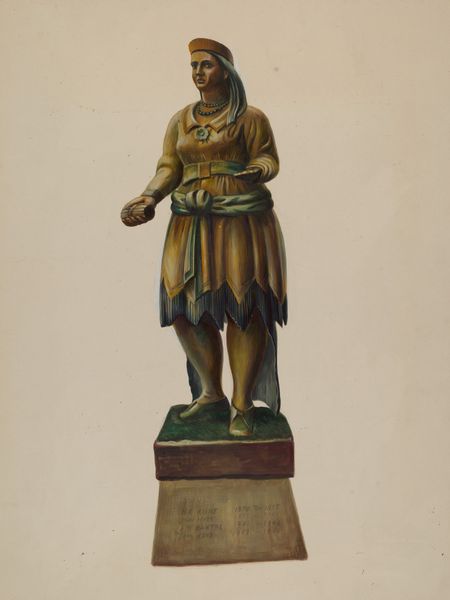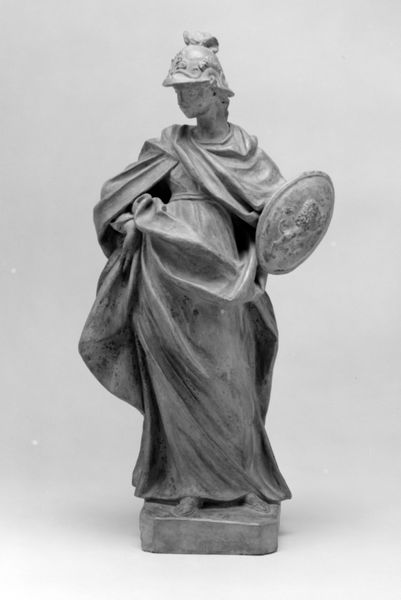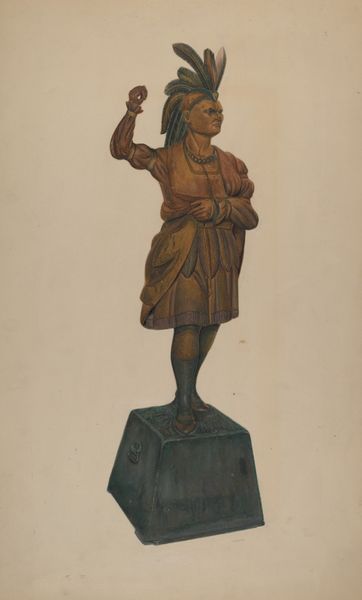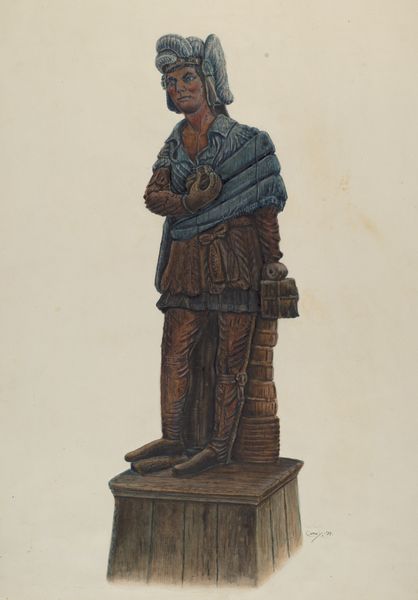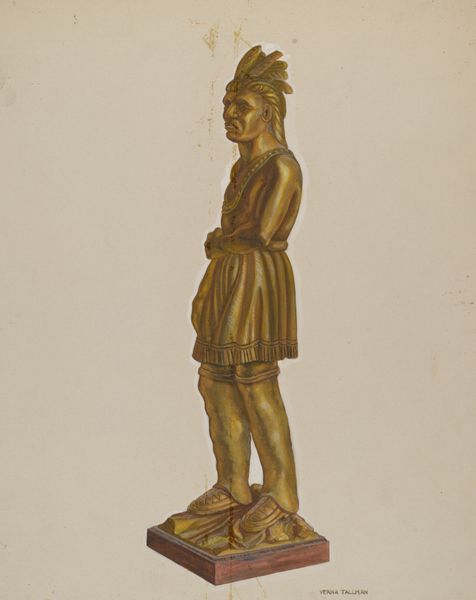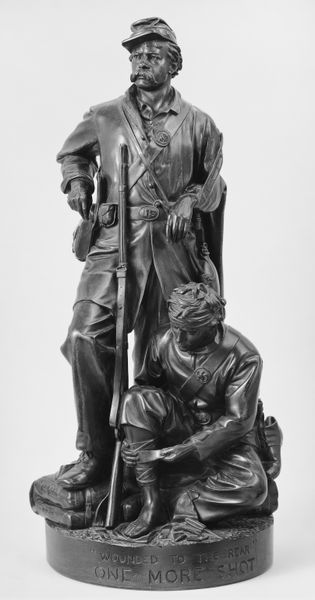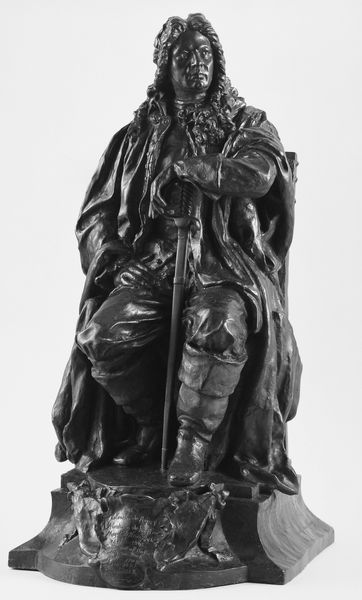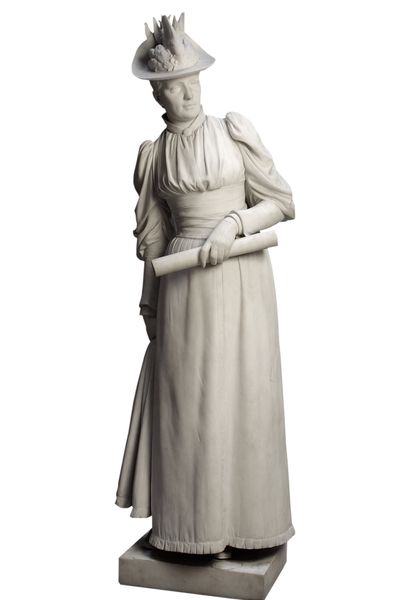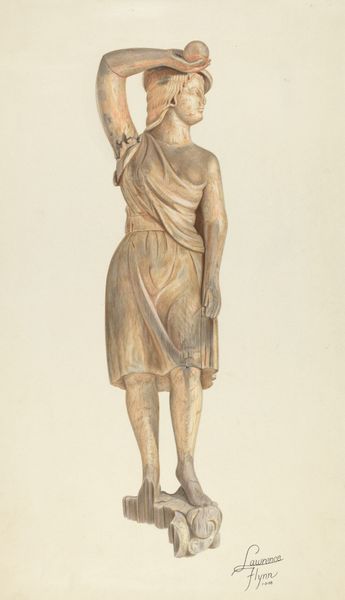
sculpture, wood
#
medieval
#
narrative-art
#
sculpture
#
gothic
#
figuration
#
sculpture
#
men
#
wood
#
history-painting
Dimensions: Overall: 47 3/4 x 15 in. (121.3 x 38.1 cm)
Copyright: Public Domain
Curator: Here we have "Saint George and the Dragon," a wooden sculpture created between 1417 and 1423 by Hans von Judenburg. It's a compelling example of late Gothic sculpture. Editor: My first impression is one of surprising delicacy. Given the violent subject matter, I expected something more imposing, but there's a tender quality to the carving. He looks almost melancholic standing over the dragon. Curator: Absolutely, and that's key. In the socio-political context of the early 15th century, the Saint George legend represented not just religious victory but also social order. It's about power structures and the Church's role in upholding them. This piece specifically seems to focus less on violent triumph and more on a kind of contemplative authority. The details of the drapery are remarkable, cascading in these very stylized folds, almost obscuring the form beneath. Editor: And even his stance. It’s not the triumphant conquering hero we might expect. One foot rests almost casually on the defeated dragon, the gesture reading as subduing power instead of pure destructive strength. I’m interested in what you said about social order. How might this sculpture function as propaganda? Curator: Think about the patrons who commissioned these pieces. Often it was wealthy merchants or members of the aristocracy eager to align themselves with virtuous figures like Saint George. Owning such an image reinforced their position within the social hierarchy, publicly associating them with piety and moral authority. It also helped them solidify their legacy, their contributions shaping both earthly and spiritual life in their city or territory. Editor: The gaze is really interesting, too. He's not looking at the dragon; he is looking away and down, perhaps at his next task or at the masses whom he serves, as you're suggesting. Curator: Exactly, it brings it all together, this notion of duty. I'm curious what other interpretations exist, of course. One could view this with a critical eye, analyzing how this particular representation of male strength impacts historical constructions of gender, the dragon an analogy of destructive femininity, now conquered. Editor: Food for thought. It strikes me, though, the longer I look at it, is how remarkably understated and beautiful this sculpture is, despite the complex historical messages it carries. Curator: Indeed, art is almost never simple and Saint George makes sure we reflect upon this notion. Editor: Well said. It offers an avenue for contemplation as well as debate about culture, gender, and faith.
Comments
No comments
Be the first to comment and join the conversation on the ultimate creative platform.
